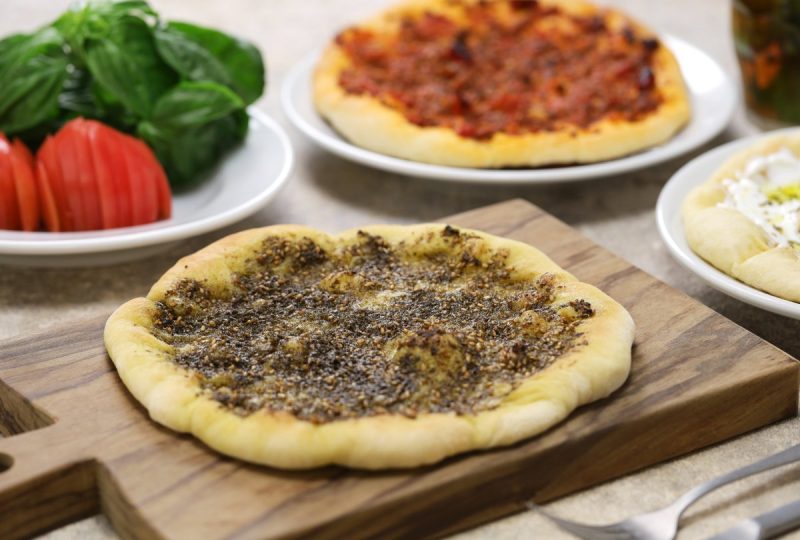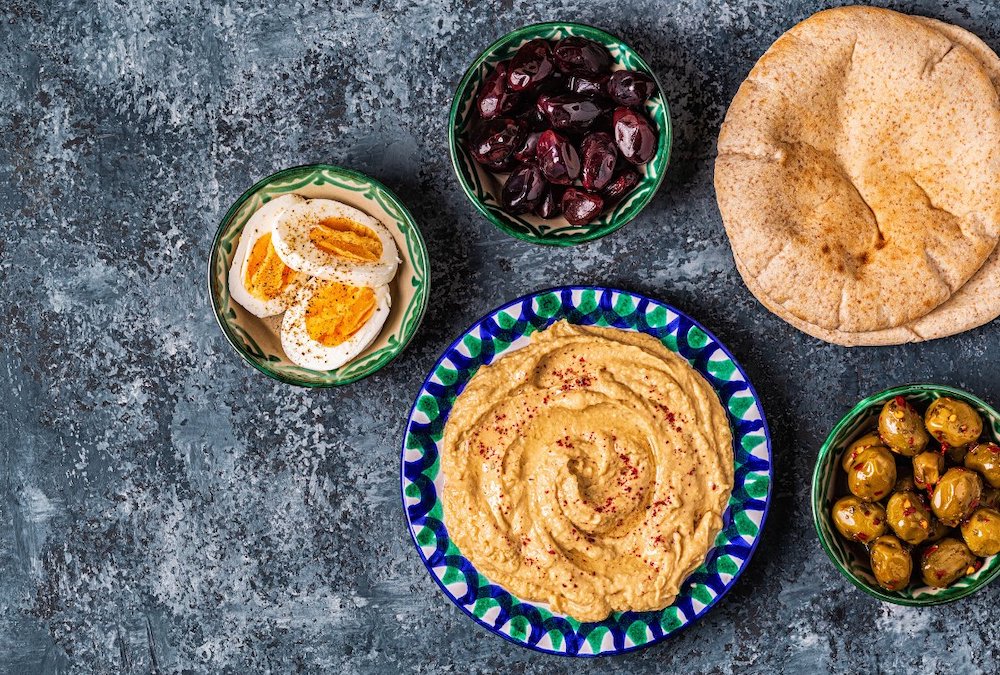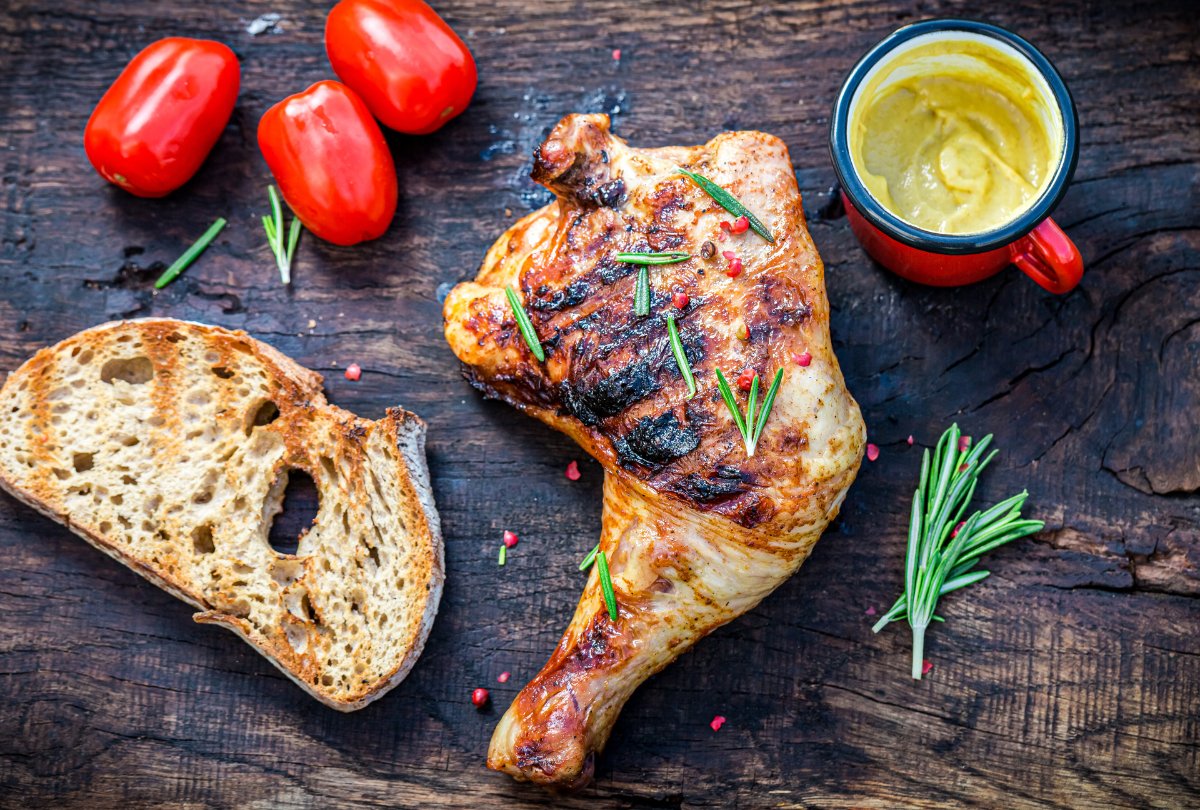Za'atar is a spice blend that has been a beloved seasoning in Middle Eastern cuisine for centuries. This versatile blend of dried thyme, oregano, sumac, and sesame seeds gives dishes a distinctive flavor and aroma that's hard to resist. But there's more to Za'atar than just flavor—it also has a rich history and cultural significance in the Arab world. We'll take you on a journey through Za'atar spice, from its ingredients and culinary uses to its symbolism in culture and history. So, if you're interested in learning more about this fascinating spice blend, keep reading!
History of Za'atar
The history of Za'atar dates back thousands of years to the time of the ancient Egyptians. It is said that they used thyme to mask the odor of the dead during mummification. The Phoenicians, renowned for their trade and long-distance travel, subsequently spread the use of thyme and other herbs throughout the Mediterranean.
The word "za'atar" itself is derived from the Arabic word for thyme, "za'atar rumi." This refers to the original Roman thyme used in the region, which was later mixed with other herbs to create the modern za'atar mixture. Za'atar was used in some parts of the Middle East as a medicinal plant and as a remedy for various illnesses, such as colds and coughs. Children are sometimes encouraged to eat the herb mixture for breakfast, as it is believed to have a positive effect on their alertness and therefore their academic performance.
Although za'atar has declined in popularity over the years, it still holds a special place in the hearts of the people of the region. It is a symbol of tradition and culture and remains widely used in Middle Eastern cuisine.

Ingredients of Za'atar
If you've ever enjoyed the delicious flavor of za'atar, you know this spice blend is a combination of several flavorful ingredients. The key ingredients in za'atar spices are thyme, oregano, sumac, and sesame seeds.
| Thyme | Thyme is a herb native to the Mediterranean region and known for its spicy and slightly bitter flavor. Thyme is a key ingredient in Za'atar spices because it gives the blend its distinctive flavor and is also known for its medicinal properties. |
| Oregano | Oregano is another important ingredient in Za'atar herbs. It has a spicy and slightly sweet flavor and is often used in Italian cuisine. Oregano is also rich in antioxidants and has antiviral and antifungal properties. |
| Sumac | Sumac is a spice common in Middle Eastern cuisine and has a distinctive sour flavor. It's made from ground sumac berries and is a key ingredient in za'atar spices, lending a unique flavor to the mixture. |
| Sesame seeds | Sesame seeds are also often added to za'atar seasoning. These small seeds have a nutty flavor and contain many healthy nutrients, such as protein, fiber, and essential fatty acids. |
Together, these ingredients create a delicious blend perfect for adding to dishes like toast, salads, stews, and even hummus! Whether you're a fan of savory or sweet flavors, za'atar is a versatile seasoning that suits almost any taste preference.

Use of Za'atar in Arabic cuisine
Za'atar is an essential ingredient in Arabic cuisine. It's used as a seasoning for bread, meat, vegetables, and salads, and as a dip with olive oil. The spice has a unique flavor characterized by its spicy and herby aroma, making it an essential component of many Arabic dishes. It can be used in countless ways to add a unique flavor and aroma to dishes. Here are some delicious ways to use za'atar spice in cooking:
As a flavouring for bread
One of the most popular ways to use za'atar is as a topping for freshly baked bread. Mix some za'atar with olive oil and spread it on warm bread. The result is a flavorful, crispy crust with a spicy and nutty flavor. It's the perfect addition to breakfast or brunch.
With meat dishes
Za'atar adds a wonderful flavor to meat dishes, especially chicken and lamb. You can use the spice blend as a marinade for meat or as a topping after grilling or pan-frying. It adds a wonderful aroma and a spicy flavor to the meat. Looking for extra flavor for your meat dishes? Spread the Za'atar rub over your meat and place it in a vacuum-sealed bag. This allows the flavors and aromas to fully penetrate the meat, allowing you to enjoy a delicious meal.
With vegetables and salads
Za'atar is also a wonderful seasoning for vegetables and salads . It can be sprinkled over roasted vegetables like cauliflower, broccoli, and carrots, giving them an extra dimension of flavor. Za'atar seasoning can also be used as a salad dressing. Mix it with a little olive oil and lemon juice for a flavorful and healthy dressing.
As a dip with olive oil
Another delicious way to use za'atar spice is as a dip. Mix it with olive oil and use it as a dip for fresh bread, raw vegetables, or falafel. It's a healthy and tasty snack that you can easily make yourself.
Za'atar is a delicious and healthy way to spice up your dishes and add a little something extra to your meals.

Za'atar in the modern kitchen and street food scene
In recent years, za'atar has also found its way into modern cuisine and the street food scene. The spice has become increasingly popular outside the Middle East and is now used in numerous other cuisines around the world.
In modern cuisine, za'atar spice is often used to give classic dishes a Middle Eastern twist. It's added to hummus, grilled vegetables, pizzas, and even cocktails. Za'atar's spicy and herby flavor complements many ingredients and adds a unique flavor to dishes.
Za'atar is also popular in the street food scene. It's often used as a topping for falafel, shawarma, and other Middle Eastern snacks. Za'atar fries, for example, are a popular snack in many parts of the world.
Za'atar spice is also popular in the healthy eating trend. It's often used as a healthy alternative to salt and other spice mixes. Za'atar contains many healthy nutrients, such as vitamin C, iron, and antioxidants.
Za'atar is not only a spice used in Middle Eastern cuisine, but has also found its way into modern cuisine and the street food scene. Za'atar's spicy and herby flavor makes it a versatile herb that lends itself well to a wide variety of dishes.
The culinary uses of Za'atar in the rest of the world
Although Za'atar is originally a spice widely used in Middle Eastern cuisine, more and more chefs and culinary experts are experimenting with Za'atar and using it in new and surprising dishes.
In the United States, za'atar is often used as a topping for bagels and other sandwiches. It's also added to popcorn and as a seasoning for fries. In France and Spain, it's often used as a seasoning for olive oil and vinegar. In Italy, za'atar is added to pizzas and focaccia rolls. In India, it's added to various chutneys and sauces.
In Australia and New Zealand, za'atar is very popular as a seasoning for grilled meat and fish. It's also often added to salads and as a topping for avocado toast. In South Africa, it's used as a topping for biltong (dried meat) and droëwors (dried sausage).
In short, za'atar has truly traveled the world and left its mark on many different parts of the world. Today, it's used in a wide variety of dishes. From sandwiches to pizzas and from meat to salads, za'atar is a versatile herb that lends itself well to all sorts of culinary applications.



3 comments
Chava
What is totally missing in this description is that in Israel. za’atar is also widely used, by Jews and Arabs alike. One can make thier own za’atar mixture or buy it ready-made. In the mixture based on the Hebrew bible, hyssop (as a bitter herb) is used as a base for za’atar.
Chava
What is totally missing in this description is that in Israel. za’atar is also widely used, by Jews and Arabs alike. One can make thier own za’atar mixture or buy it ready-made. In the mixture based on the Hebrew bible, hyssop (as a bitter herb) is used as a base for za’atar.
Chava
What is totally missing in this description is that in Israel. za’ater is also widely used, by Jews and Arabs alike. One can make thier own za’atar mixture or byu it ready-made. In the mixture based on the Hebrew bible, hyssop (as a bitter herb) is used as a base for za’atar.
Leave a comment
This site is protected by hCaptcha and the hCaptcha Privacy Policy and Terms of Service apply.